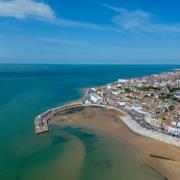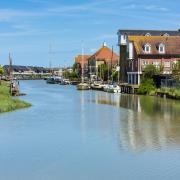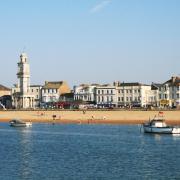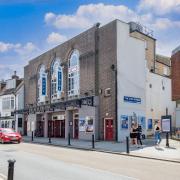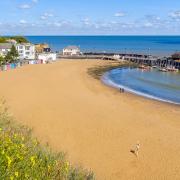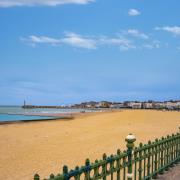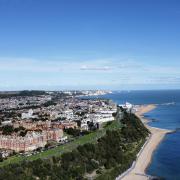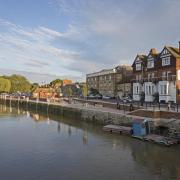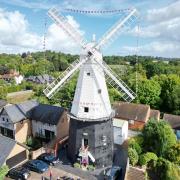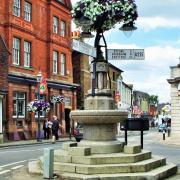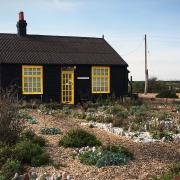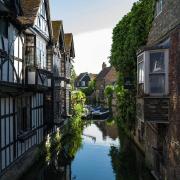Since the 1840s, Paddock Wood has grown from a tiny settlement of peripatetic hop pickers and farmers to the lively bustling place it is today. Pembury is smaller and quieter, but shares the same sense of community spirit
Spotlight on: Paddock Wood and Pembury
Since the 1840s, Paddock Wood has grown from a tiny settlement of peripatetic hop pickers and farmers to the lively bustling place it is today. It’s a very friendly town, where there’s a tradition of voluntary groups working for charity, and a real sense of community. Pembury is smaller and quieter, but shares the same sense of community spirit
Paddock Wood came into existence as a result of the railway station, which arrived in 1842, to transport the hop pickers from London every year for their annual ‘hop picking holiday’ in the Kent countryside. By 1900 Paddock Wood had evolved into a sizeable village and now it has the status of a town.
Even today, it’s the centre for hop growing in Kent, but it’s also a busy commuter town because of its transport links to London and is also the centre for distribution for fruit and vegetables to and from Europe. In contrast, Pembury is a large village which has been in existence for much longer – in fact it’s been populated since the Iron Age.
GETTING AROUND
There are plenty of car parks in Paddock Wood, and the town centre is Commercial Road, running south-west to north-east through town, where you’ll find the main shopping parade. It’s a wide thoroughfare leading from the station, with an extremely impressive war memorial at the railway end. You can get a taste of ‘hidden’ Paddock Wood by going along the Old Kent Road, where you’ll see John Brunt VC pub and some quaint Victorian houses, amongst them a row of charismatic white cottages.
Coming into Pembury on the Hastings Road, you arrive at the large King William 1V pub on the right next to a Chinese takeaway restaurant, and soon you come to the ‘old’ village itself, with the post office and hairdressers on the right, and on the left the large church of St Peter.
Further down the Hastings Road becomes the High Street, where you’ll find an enscribed horse trough, dated 1555, then the Camden Arms restaurant, and the Village Hall. Three miles away is Upper Green, the ‘newer’ section of Pembury with more recent housing developments.
TOWN ATTRACTIONS
Paddock Wood
Foal Hurst Wood is a community nature reserve, restored by local people, and near the town centre. Designated as a Local Nature Reserve, it is 29 acres of woodland and 11 acres of meadowland, with rides and footpaths, flowers and rare birds.
West Kent Shooting School (01892 834306) offer the most comprehensive range of clay target shooting in the south east. Events, charity shoots, etc. Mascalls Gallery (01892 839039) has a frequently changing programme of exhibitions of internationally and nationally famous artists. The gallery has exhibited drawings by Marc Chagall for nearby Tudeley Church, the windows of which he designed. The current exhibition is John Piper (see page xxx).
Pembury
St Peter’s Church, a 12th-century structure which stands on the slope of a picturesque ridge. The building was enlarged by local squire John Colepepper in the 1330s. Beautiful village green.
NEARBY
Hop Farm family park (01622 870804). Tremendous day out for adults and children alike. Thirty rides and attractions, the UK’s first magic factory, a Victorian carrousel, children’s driving school, giant jumping pillows, mini funfair, crazy golf, animal farm etc. Will host The War and Peace show (24-25 July), the largest military vehicle spectacular in the world.
Marle Place Gardens and Gallery (01892 722304) 10-acre Wealden garden open to the public with a series of colourful garden ‘rooms’ with interesting features from the Victorian and Edwardian eras. Art gallery with exhibitions of work by contemporary artists, a resident artist’s studio and workshop. Teapot Island (01622 814541) Fascinating collection of more than 6,400 teapots, each with its own unique history. Pottery available that can be bought for children to paint designs on, which can be fired as a memento. Cream teas and riverside caf�. Bayham Old Abbey. These 13th-century ruins are a wonderfully peaceful place to walk in, and they span the border between Kent and Sussex. The stonework is set in grounds designed by Humphrey Repton, and there are rooms in the ‘Georgian Gothick’ dower house that are open to the public.
WHERE TO EAT AND DRINK
The Poacher (01732 358934) in nearby Tudeley has refreshing good food and gastro-style dishes, The Gun and Spitroast (01892 722925) in Horsmonden is a 1500s country inn with one of the few remaining inglenook spitroasts in the country, preparing meat roasted over apple-wood logs. Great pubs are The Halfway House (01892 722526) in Brenchley, serving fine real ales and great food. Pembury has two excellent restaurants, which are also pubs: The Camden Arms Hotel, (01892 822012), offering classically executed gastro-style dishes, and the King William 1Vth (01892 825460), which serves traditional pub food, real ales and wines.
VILLAGE WATCH
Horsmonden
This village has a large, attractive village green, and there’s a great view from a road on the hill overlooking the Medway Valley. It was a notable centre for the medieval iron industry and was the first place that developed the hop variety ‘Fuggles’ in 1875. Don’t miss 14th-century St Margaret’s church, three miles to the south.
Brenchley
The parish of Brenchley also encompasses nearby Matfield. It has a beautiful High Street, with lovely old timbered houses, Grade I listed All Saints church (dating from the 13th century) and a fantastic avenue of 400-year-old yew trees. Wat Tyler and Sophie Rhys Jones (wife of Prince Edward) have been Brenchley residents.
Yalding
Originally called Twyford, Yalding is at the crossing point of two rivers. Famous for having the longest surviving medieval bridge in Kent: Town Bridge, as well as The Twyford Bridge, one of finest medieval bridges in south-east England. It also has a number of beautiful old buildings, including the 13th-century church of St Peter and Paul, which has an unusual spire.
Collier Street
Known colloquially as ‘the village in an orchard’, because it was famous for its apple orchards. At the heart of the village is St Margaret’s church (1840s), and there’s a school, recreation ground and village hall. Originally a centre for fruit and hop farming, the farms now grow cherries, pears, strawberries and asparagus and have apple orchards.
Marden
In centre of Wealden farmlands, with orchards, oast houses and lovely old buildings. The old town centre still has the village stocks outside St Michael and All Angels church (dating from the 1200s). It first appeared on records in 1100 as Maeredaen, meaning ‘Forest clearing for horses’. A number of Flemish weavers settled here in medieval times.
TRADERS TALKING
John and Margaret Ingram run JMH Flooring (01892 838400) in Commercial Road, selling every kind of floor covering, laminate, wood) apart from ceramic surfaces. “I’ve been here coming up to 20 years,” John says. “It’s a great little village, although its really a town, even though it has village status. It’s a very friendly place and a good place to live. I suppose we have our problems like all towns, but I prefer to concentrate on the many positives of living and trading here. We have a great cross section of customers, of all types and ages, both from the town and all the surrounding villages.”
Nicky Goodman is proprietor of Paddock Wood Cards (01892 836888), also in Commercial Road, who sell unusual and standard cards, balloons for all occasions, photo frames, baby and christening gifts, including the exclusive collectible ‘Me to you’ Teddy bears. “I’ve worked here for eight years and took over the shop two years ago,” she says. “And we live locally, our children go to the local schools. My husband and I have lived in Paddock Wood for most of our lives, and it’s a really nice community and the businesses are really coming together now with Paddock Wood Business Association, which we’re part of. We work with the Lions and Lionesses (volunteers who raise money and stage events to support local charities) to make Paddock Wood a better place, for instance organising events at Christmas. We have lots of nice regular customers, and know all about the children’s parties. The people are lovely, there’s a real community spirit.”
CONSIDERING A MOVE
Paddock Wood has good transport links: an excellent station with rail links to London and major cities, plus it’s near to the A21, M25 and M20. Nearby Tonbridge has fine schools, and Mascalls comprehensive in Paddock Wood itself has a very good reputation. House prices are on a par with those of South London, with one- and two-bedroom flats costing in the region of �105,000 and �156,000 respectively, and a three-bedroom semi around �309,000 and four bedroom detached houses upwards of �514,000. For flats, Pembury prices are higher, with one- and two-bedroom flats costing �128,000 and �170,000 respectively, whilst houses cost roughly the same as those in Paddock Wood.
GETTING THERE
Paddock Wood is about 15 minutes’ drive from Maidstone, Tonbridge and Tunbridge Wells, and 75 minutes from London. You reach it via the A21, which leads off junction 4 of the M20, or junction 5 of the M25, then take the A228 to the B2160. Paddock Wood station is central in the town, and trains to London Bridge take 45 minutes and there are bus connections to nearby locations. Pembury is just off the A21, which you reach via junction 5 of the M25, and has no railway station but is served by Arriva buses. Call Traveline 0871 2002233 for public transport details. Satnav postcodes for the town centre of Paddock Wood is TN12 6EN, and for Pembury is TN2 4PB.
MY TOWN
Paul Smith, chairman Paddock Wood Business Association and owner the House of Portmeirion (01892 835098)
Tell us about the PWBA
We are totally independent and a voluntary organisation run by and for its members. Our aims are to support local trade, commerce and industry and help reshape and support the local economy.
How is the business community faring?
We’re riding the storm very well. Despite these tough times we continue to attract new businesses and customers and there are no empty shops on the High Street. Most of the retail business is run by independent traders who pride themselves on offering the very best in customer service and competitive pricing.
Advice if opening a shop in town?
Go for it. Paddock Wood has been identified by the borough council as an important place for further redevelopment and there’s more retail space on the way, with town centre redevelopment, and many more homes are being built.
What do you like about Paddock Wood?
It’s a very friendly and desirable place to live and work and has an excellent community spirit. Ages and social classes are well balanced and so many people have a caring and precious attitude towards what goes on.
What would you change about the town if you could?
I’d like to see more retail variety shops, a swimming pool, community centre leisure facilities and hotel accommodation.
Do you have a favourite place in town?
The Hop Farm country park is probably the most famous of all locations within the area and attracts people from far and wide.
Why move to Paddock Wood?
If you love the countryside, yet want to be part of a community and don’t want to lose touch with city life, then Paddock Wood strikes exactly the right balance.
Sum up the town in a sentence
A small town with a big heart!



